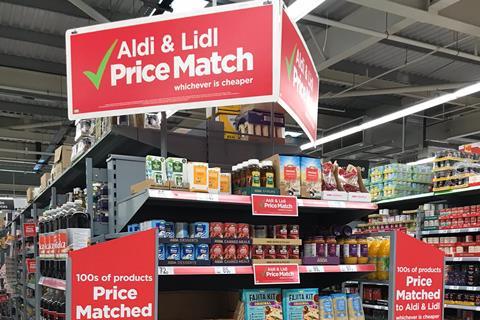
The industry is entering a new ‘race to the bottom’. So suggests this month’s news that Asda is price matching against both Aldi and Lidl across 287 products.
It’s a powerful draw at a time of ongoing inflation, which stood at 6.7% in December, according the BRC shop price index. However, this phase could see the shopper ostensibly winning and the retail sector losing. After all, more than two-thirds (69%) of the 120,000 retail job losses in 2023 came from rationalisation, according to the Centre for Retail Research this week.
We could say ‘it was ever thus’. Retailers must be seen to be competitive to maintain customer loyalty and will always take necessary steps to create perceived value. But as we slowly emerge from the darkness of the past three years, surely green shoots will begin to emerge.
Recent history reminds us shocks to the system are never far away. Both the US and UK have elections this year, each of which has the capability of throwing a curveball into the mix.
Theoretically, raw material prices should start to fall, the labour market should settle, and wages should stabilise – meaning inflation should also fall. However, geopolitical events in the Red Sea and Suez Canal, for example, add to the uncertainty.
Although the US and UK are acting to stabilise the global economy and quash uncertainty, any negative impact on oil and raw material prices will likely push costs up in the supply chain, possibly placing future upward pressure at the till.
So retailers and suppliers will not only need to respond to events, but keep an eye on the future and plan accordingly.
The industry needs to take control of its own outcomes. It should ask itself: how can it add value? How can it create the conditions where we can grow our categories and businesses, whilst providing consumers and shoppers with real as well as perceived value?
The answer lies in setting out a roadmap today and planning a strategic course for the next three to 10 years. Devise a category vision and take a proactive stance to help cushion some of the unforeseen events, whilst maintaining direction and long-term purpose.
For suppliers, that means adding value to relationships and working with retailers to identify short and long-term, quantified strategic opportunities for the category, rather than focusing on their own individual brands and product portfolios. Take an objective stance. Develop and implement insightful and effective strategies that create positive outcomes whilst aligning to retailer agendas.
If suppliers fixate purely on short-term events, they may find their competitors have moved ahead and are better placed to exploit new opportunities.
Unexpected events will happen. And of course, we will, as an industry, need to react. But is there a need today, more than ever, to challenge ourselves and create our own green shoots of recovery.
If the industry does nothing, it could simply be waiting for the next wave of events to submerge it, unwittingly entering a new cycle of knee-jerk commerce.
Never was there a time when the adage ‘fail to plan, plan to fail’ was more apt.



















No comments yet